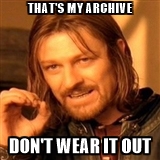
Nicholas Carr has just pointed to some recently published research which suggests that the presence of smartphones divert our attention, using up cognitive resources which would otherwise be available for other activities, and consequently our performance on those non-phone-related activities suffers. In certain respects, this might not seem to be ‘news’ – we’re becoming increasingly accustomed to the problem of technological interruptions to our physical and cognitive activities: the way that visual and aural triggers signal new messages, new emails, new tweets arriving to distract us from the task in hand. However, this particular study was rather different.
In this case, the phones were put into silent mode so that participants would be unaware of any incoming messages, calls etc. (and if the phone was on the desk, rather than in their pocket or bag or in another room altogether, it was placed face-down to avoid any visible indicators) (Ward et al. 2017, 144). Despite this, they found that
“… the mere presence of one’s smartphone may reduce available cognitive capacity and impair cognitive functioning, even when consumers are successful at remaining focused on the task at hand” (Ward et al, 2017, 146).


 Recent years have seen a flurry of publications and statements concerning the importance and value of the open science movement in archaeology. Examples include the collection of papers published in 2012 in World Archaeology (see Lake 2012), the volume on Open Source Archaeology edited by Andrew Wilson and Ben Edwards (2015), and, most recently, a series of papers by Ben Marwick (2016; Marwick et al 2017). The idea that publications, data, and methods (including code) should be freely accessible in order to make archaeological research more reproducible is evidently a ‘good thing’ and very much in vogue.
Recent years have seen a flurry of publications and statements concerning the importance and value of the open science movement in archaeology. Examples include the collection of papers published in 2012 in World Archaeology (see Lake 2012), the volume on Open Source Archaeology edited by Andrew Wilson and Ben Edwards (2015), and, most recently, a series of papers by Ben Marwick (2016; Marwick et al 2017). The idea that publications, data, and methods (including code) should be freely accessible in order to make archaeological research more reproducible is evidently a ‘good thing’ and very much in vogue.


 I’ve commented
I’ve commented 

 We often hear of the active archive, but what about an idle one? In a post on
We often hear of the active archive, but what about an idle one? In a post on